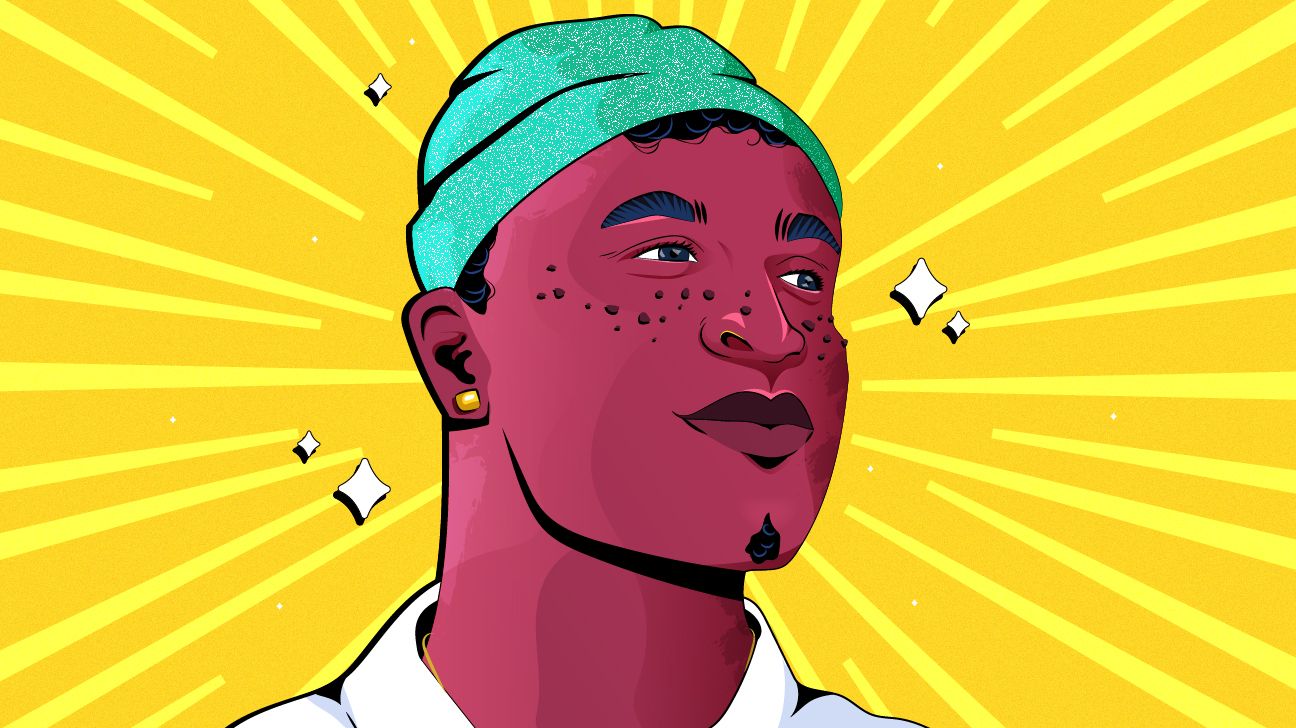Some call them “Morgan Freeman moles.” Others might know them as “Black Auntie dots.” If you grew up in a Black family as I did, you might’ve seen these dark spots decorating your grandparents’ cheekbones — adding character, even though you didn’t really know what they were.
As I got older, what once seemed natural became more and more noticeable. Many questions arose as to what these marks were and why I’d mostly seen them on Black faces.
A quick Google search of “Black people moles” confirmed one thing for sure — I wasn’t the only one who had these lingering questions.

These “moles” are clinically known as dermatosis papulosa nigra (DPN). DPN is a harmless skin condition that appears on the face and/or neck as small circular raised bumps that range in size from 1 to 5 millimeters.
They actually aren’t classified as moles at all — these lesions begin flat and “slowly become raised over time,” according to dermatologist Dr. Adeline Kikam, DO, FAAD.
Unlike moles, DPN is never cancerous and is seen predominantly on people of African and Asian descent. In fact, DPN affects up to a third of African-Americans today!
As of 2021, the cause isn’t yet known, but researchers speculate that the epidermal growths are inherited through genetics. Various studies support the theory that DPN is passed down genetically, citing upward of 75% of people with the skin condition to have another family member who also grew up with DPN.
These dots are seen twice as often in women than in men, and usually at the onset of adolescence. Due to their predisposition for appearing on the upper half of the body, sun exposure is also thought to heighten the likelihood of DPN development.
New York City board certified dermatologist Dr. Elyse Love, MD, FAAD recommends visiting a dermatologist on a yearly basis to evaluate whether “all lesions are indeed DPNs.”
Similar to freckles, birth marks, or other skin aberrations on the face, people who grew up with DPN can be subject to ridicule — though many say that it only moderately affects their overall quality of life.
Musician and songwriter Mary Akpa was asked to describe her skin using three words. She replied, “rich, nuanced, luxurious.” But she wasn’t always this comfortable in her own skin.
Mary describes the self-love for her skin as a “journey” and that she was repeatedly bullied for her own raised bump above her eyebrow growing up. She recalls expressing her hatred for the facial anomaly that made her different to a family member when she was in middle school, to which her cousin responded, “Why, it’s a beauty mark?”
It was the first time Mary could remember any “direct, positive association” being made with her DPN — and it stuck with her for the rest of her life.
Though many chose to go through great lengths to remove their marks from DPN, I always saw them as evidence of a legacy for how stunning Black people are.
Where others might see differences that set them apart from their peers, I see history, richness, and a common bond that needs no explanation.
It is a marker for connecting, not only to one’s own family tree, but to the Black “brothers and sisters” you don’t even know.
I have yet to experience DPN for myself, but when I look around a room full of family and friends, these dark pearls adorn their skin in the most beautiful of ways.
As a child, I thought they were like rites of passage; and to grow old as a Black person in America always felt like a blessing.
Ondine Jean-Baptiste is a freelance writer and communications specialist based in Brooklyn. When she’s not oversharing on the internet via Twitter or Instagram, you can find her marathoning “Master Chef,” making a mood board, or telling anyone who will listen she’s a native New Yorker.
